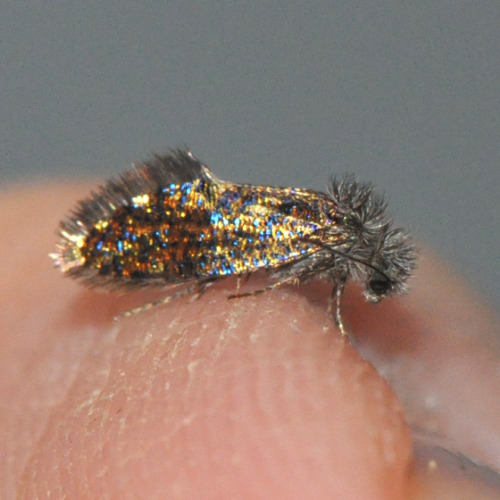insectlove: invertebrate-science: Chinquapin Leaf-miner Moth…

invertebrate-science: Chinquapin Leaf-miner Moth (Dyseriocrania griseocapitella) (Image Source: BugGuide)
The frilly edges on the wings are a characteristic of tiny moths (“microleps”, which I think is cute-sounding). Something about the physics of flight when you shrink to a certain size makes it that you no longer need a membrane to fly; filaments will do.
This is even more apparent in the smallest insects known, a family of wasps called fairy flies (Mymaridae), whose wings are just filaments:
 More about fairy flies here, including a cool quotation that refers to them as “creatures so small that ordinary garden air is as thick as water to them, and they maneuver in the up-blast not with wings, but with sticking-out feathery oars.”
More about fairy flies here, including a cool quotation that refers to them as “creatures so small that ordinary garden air is as thick as water to them, and they maneuver in the up-blast not with wings, but with sticking-out feathery oars.”
Or still yet more about fairy flies in this awesome piece by science writer Ed Yong: How tiny wasps cope with being smaller than amoebas. It includes this kid-you-not image:

Depending on your browser settings, the period at the end of this sentence is probably about 500 micrometers across, meaning a typical fairy fly could fit entirely within its circumference.
Reposted from http://lies.tumblr.com/post/61501068572.
Tags: insects, insects that anonsally will never see, in fact that no one will ever see if they're not looking very closely, fairy flies, microleps.
